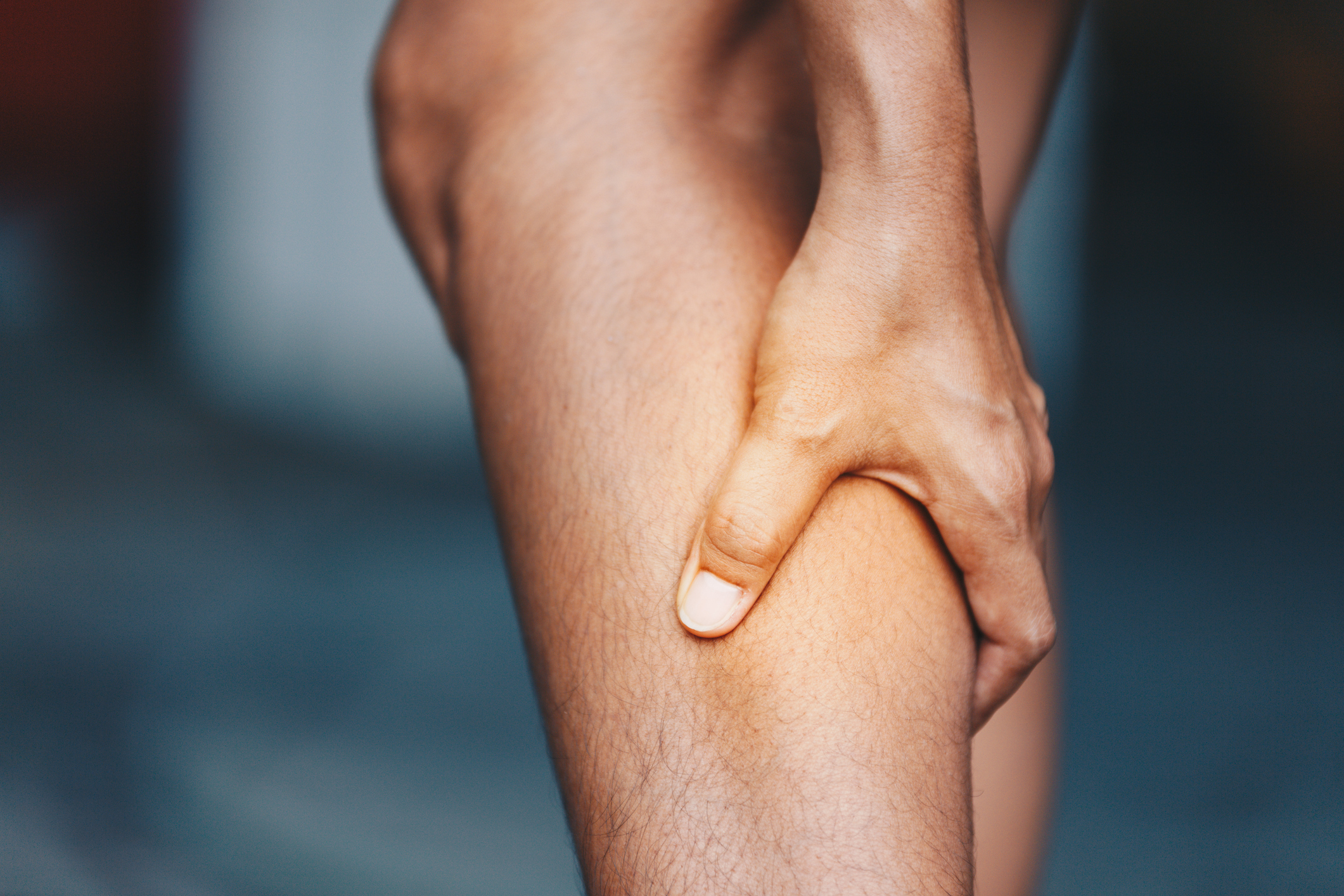

LDL is the sticky cholesterol that can build up in our arteries, cause them to narrow and reduce blood flow — and we know the troubles that poor circulation can lead to.
At my annual physical, I’m always reassured that my cholesterol levels are in tip-top shape. But other than having a blood test, how would I know if that were to change?
Turns out there are some common symptoms that can forewarn you. The trouble is, many people ignore them, writing these signs off as a result of too much or not enough walking, sitting too much, or sometimes even just a common occurrence with age.
If you’re experiencing leg spasms or cramps, you may be one of them…
When leg cramps aren’t just leg cramps
When arteries narrow, and the smooth flow of blood to your body parts is disrupted, often the first noticeable sign something is awry is often felt in the legs.
Leg spasms or cramps can be the first sign of peripheral artery disease. They can feel like clenched muscles and are very painful.
Leg cramps have various causes, but the pain of PAD usually shows up as something called intermittent claudication.
This pain in your leg muscles happens when you’re active and stops when you are at rest. Intermittent claudication can also make your legs feel numb, weak, heavy or tired.
Peripheral artery disease can also lead to burning or aching in the feet and toes while at rest, especially while in bed and lying flat.
There are other signs, too — cool skin on the feet, redness or other color changes of the skin, and toe and foot sores that don’t heal.
Testing and dealing with symptoms
Although there are many signs and symptoms of PAD, just as often there are none at all.
But if you do experience any of the signs of PAD discussed here, don’t wait to see your doctor.
In the meantime, there are ways to relieve the uncomfortable muscle cramping associated with PAD.
Applying heat to muscles using a heating pad or even taking a warm bath can help. This can help increase blood flow to the cramping muscle so it can relax. On the other hand, applying an ice pack to sore muscles can help relieve pain.
Stretching is also relieving but a certain kind, called passive stretching, was actually found to improve blood flow, blood vessel dilation and stiffness.
Keep cholesterol under control
Doctors recommend statins for cholesterol. Cardiologist Dr. Elizabeth Klodas provides the information here that she tells her patients.
But as with most health problems, there are lifestyle adjustments you can make that can help you work towards healthy cholesterol levels.
Nutrition is an important part of that. Studies have shown that people with PAD have lower a lower omega-3 index compared to people who don’t have the disease. Oily fish such as salmon, sardines and herring are high in omega-3s.
Weight training is a form of exercise that’s been shown to improve the benefits of HDL (“good cholesterol”) for your heart and circulatory system.
Finally, if you’re a smoker, make every effort to cut back or quit.
Smoking is a “double whammy” when it comes to cholesterol and PAD. Not only does it make LDL stickier, so it clings to your artery walls and clogs them, but it lowers levels of HDL, which work to clean those LDLs from your artery walls.
Here are seven things that can make quitting easier.
Source:
Peripheral artery disease symptoms and causes — Mayo Clinic
High cholesterol early symptom: Spasms or leg cramps could be the first noticeable sign of clogged arteries —Times of India
New research shows people with PAD could have an omega-3 deficiency — Eureka Alert
